Doing it by the Brooks: A Foray into Modernist Jewelry
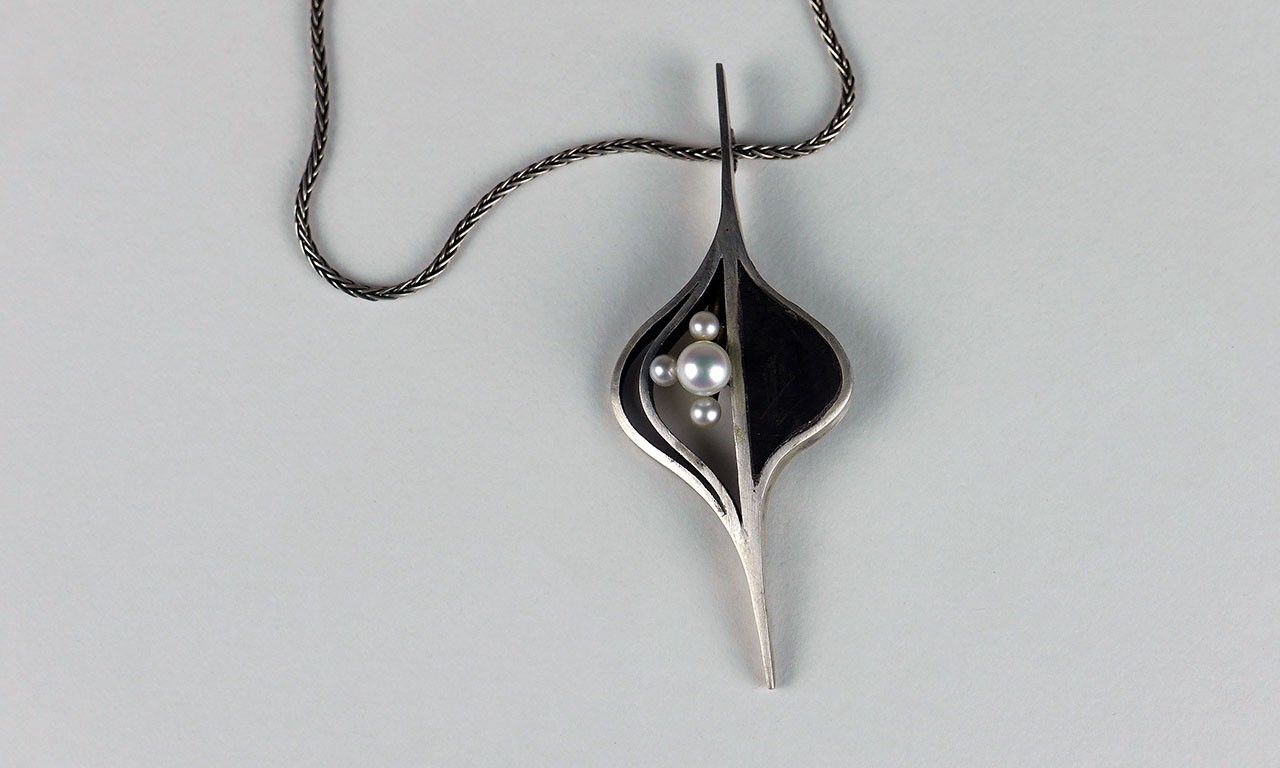 |
| Necklace, 1964 George Brooks (Czechoslovakian-born American, 1925-); Santa Barbara, California Silver, 18 kt yellow gold, ebony and pearls 2020.3.1 Gift of Mr. George Brooks |
Jade Laden, Never Jaded
Modernist jewelry exploded into popularity between the 1930s and 1960s as a counterculture movement to the highly organic Art Nouveau and rigid Art Deco style jewelry that had been produced for decades. This post follows the story of George Brooks, a jeweler who became a valuable member of this larger movement, though never achieved the fame he likely deserved in large part due to happenstance. Brooks’ larger interest in working with stone led him to become a collector of Chinese jades and has generously donated much of his collections to the Bowers Museum. In February of this year, he offered to donate one of his jewelry works to the Bowers, the subject of this very post.
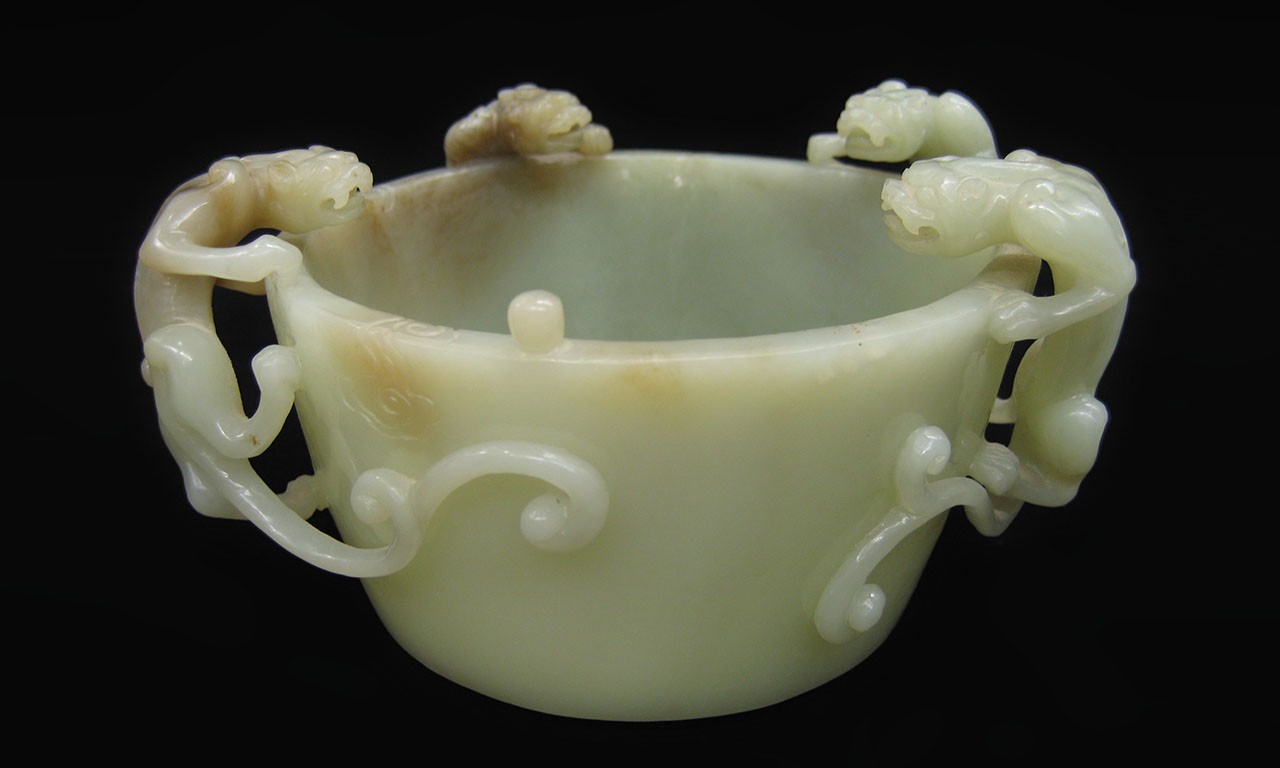 |
| Jade Wash Bowl (91.36.1) Gift of Mr. George Brooks |
Birk Balked, Delrue Rued
George Brooks (born George Rybnicek) was born in Brno, Czechoslovakia in 1925 and lived there until he was six, when he, his two sisters, and mother moved to Montreal, Canada to follow their father. Come his college years, he began studying electrical engineering but quickly realized his passion and transferred over to sculpture and metalsmithing at the prestigious École des beaux-arts de Montréal. His jewelry career started in earnest a few years later with a goldsmithing apprenticeship at Henry Birks & Sons—Canada’s leading jewelry retailer. By 1950, other Montreal jewelers were rejecting traditional jewelry making values. Brooks first became aware of this in works by Georges Delrue, a French jeweler working out of Quebec. Influenced by artists like Jean Arp, Joan Miró, and Jacques Lipchitz; Delrue was a founding member of the “avant-garde” jewelry world. Brooks was interested and eventually obtained a position as a goldsmith apprentice with Delrue—in the first Modernist jewelry workshop in Canada.
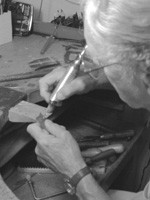 |
| George Brooks at work, 1998 Licensed from George Brooks under CC BY-SA 3.0 |
Anon, Anon!
In the seven years that Brooks was with Delrue, he was exposed to countless creative designs and a wide variety of techniques. He also met perhaps his most valuable mentor: Hans Gehrig, a Swiss-trained silversmith who taught Brooks how to forge silver. Fear of boredom was always a strong motivator for Brooks, though. After seven years he felt he had learned what he could through working with Delrue and opened his own shop in downtown Montreal. Brooks flourished in his new independence, creating abstract pieces that combined what he had been taught in novel ways. It was around this time that Gehrig and Brooks founded the Montreal Gem and Mineral Club, and Brooks started to mix in gemstones and other precious materials into his jewelry. Then, at the height of his popularity Brooks and his wife moved to Santa Barbara, California where he still resides. Despite having a vibrant art community, Brooks’ avant-garde creations did not fit the city’s aesthetic, and relegated him to a certain degree of anonymity. With the advent of the internet, Brooks’ works have been rediscovered by experts, collectors and museums alike.
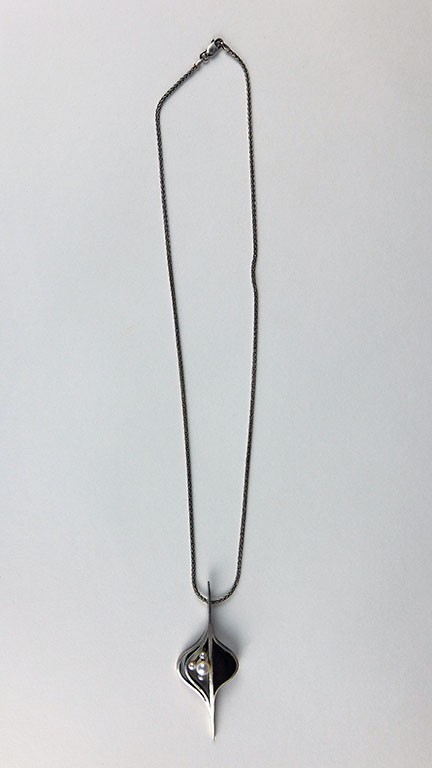 |
| Alternate view of 2020.3.1 Gift of Mr. George Brooks |
Santa Barbaran Sensibilities
The modernist style that Brooks relied on ended up permeating many aspects of art and society. The shift from traditional jewelry to this new genre happened, more-or-less, suddenly and affected almost every aspect of jewelry making, from the type of metals being used and the precious stones to the forms and designs that the jewelry is made into. It challenged the traditional way of fabricating jewelry and placed the concept and design back into the forefront of creating the piece. Given the stylistic shift away from Modernism that happened when Brooks moved to Santa Barbara, this pendant is interesting because it is reflective of the types of works he created in Montreal but was made three years after arriving in California. It explores the color juxtaposition of silver and ebony, uses both organic and relatively sterile geometries, and the use of the negative space.
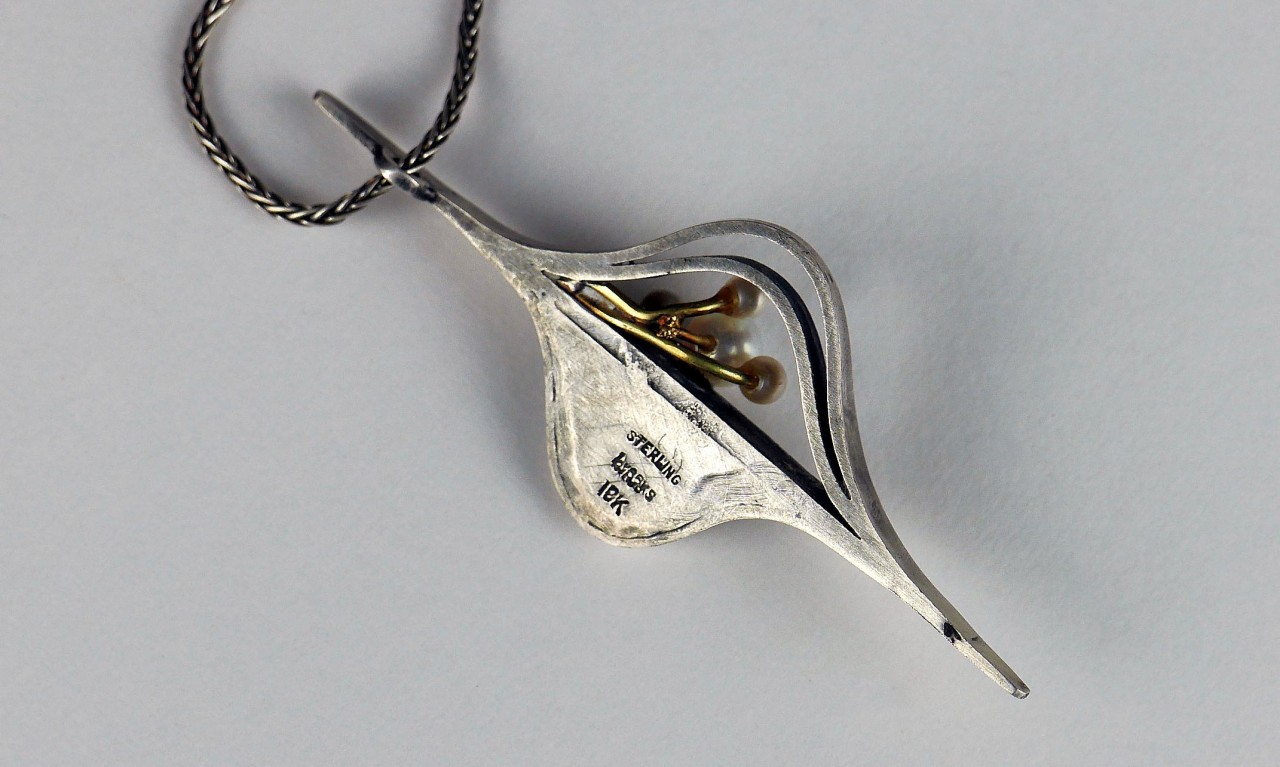 |
| Reverse of 2020.3.1 Gift of Mr. George Brooks |
Ebony Sheep
Though the Bowers Museum has a sizeable collection of over 4,000 pieces of jewelry and adornment, the majority of these are ethnographic objects from Africa, Asia and Oceania. Even compared to the other American and European necklaces and pendants in the Bowers Collection, this necklace is unique. They are made in more traditional styles, so both the design and materiality of this new acquisition stand apart. When he actively worked as a jeweler, Brooks was a no-nonsense artist in a lot of ways. He has said he will never understand the notion of the starving artist, perhaps why his designs—though always pushing boundaries—remain so accessible over a half century after they were first made. We are excited to add this new piece to the Bowers collections.
Post researched and guest co-written by Samantha Leicht-Ruskey, Volunteer for the Bowers Museum Collections Department. Text and images may be under copyright. Please contact Collection Department for permission to use. References are available on request. Information subject to change upon further research.
Comments